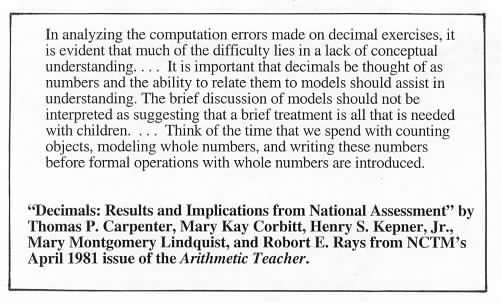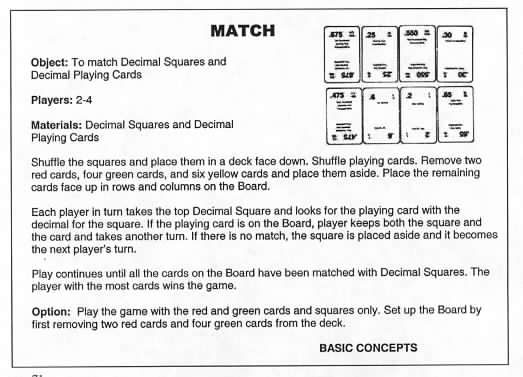.

(a) Decimals for the red squares have only one place because the number of shaded parts is a single digit number. Ask people to count by tenths . . . .9 and put a red square for .9 on the overhead to show that the next number after .9 when counting by tenths is 1.0 for a whole square and zero tenths. Discuss the tendency for students to write .10 following .9 but that the squares can be used to show that .10 is equal to .1 by using squares with 10 shaded parts out of 100 and 1 shaded part out of 10.
(1) Squares to Decimals – Each person selects a square finds its playing card and writes its fraction;
(2) Decimals to Squares – Each person selects a playing card and then writes a description of its square.
